Fortunately ML’s problem was also fixable
| October 19, 2018 | Posted by Melinda under Uncategorized |
Unfortunately, it required abdominal surgery and eight weeks off after getting tuned up at Amber’s for three months.
Fortunately we caught the problem REALLY early, something I probably wouldn’t have caught for a while (years?) because unlike Amber, I don’t see and interact with her daily.
What was this thing?
A granulosa theca cell tumor. Abbreviated either as GTCT or GCT. If you want to skip ahead and get an “A” in the class, this was the best online fact sheet I’ve found.
Here’s the highlights:
GTCT’s are the most common type of ovarian tumor in horses. They are usually unilateral (only affect one ovary). They can get HUGE, like grapefruit massive huge or bigger. Considering that a normal ovary is about the size of a tiny potato, that’s pretty big. The tumors are most common in mares between the ages of 5 and 10 years (ML is 6 years old). GTCT’s pump out hormones that affect attitude and reproductive cycles. Testosterone, estrogen, anti-mullerian hormone, inhibin – all or some of these can be produced. The behavior and cycle changes in the mares personality are dependent on which hormones the tumor decides to pump out. Some of the most common signs that make me tell owners to get a repro ultrasound to look for one of these tumors is a mare that is suddenly aggressive and stallion-like, a mare that’s constantly in season, or a mare that isn’t getting pregnant or they are trying to get pregnant and the mare won’t come into season.
Here’s how we figured out MerryLegs had one.
MerryLegs has always been a dominant horse. Farley is the only horse I’ve ever been able to pasture with her that after a couple of weeks of “get to know yous” remained on top and keeps ML in her place. I had noticed that at the beginning of this year ML was starting to treat Farley more as an equal and Farley allowed it. She was getting way too big for her britches but I chalked it up to a young horse finding her footing as she matured, a result of the pasture dynamics changing a bit, and boredom since my plate has been more than a little full.
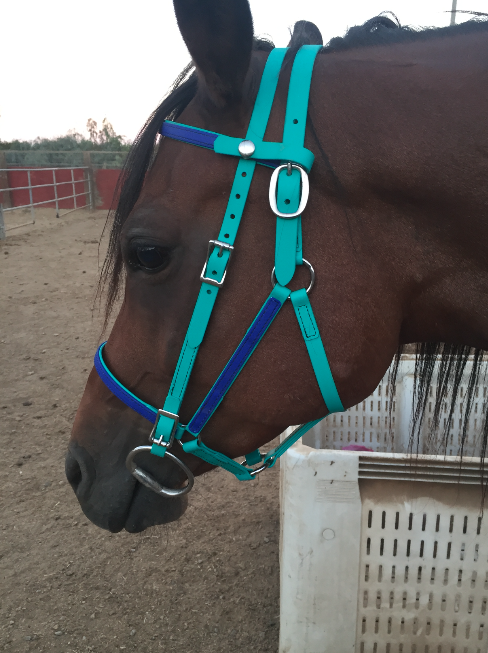
I *may* have broken my rule about unproven horses not getting shiny new tack of their own. I sold a bunch of tack and bought this. I considered it a promise to her since she made it to the other side of surgery, rather than waiting and making it a reward of making it to her first ride.
By the time May rolled around I was SO HAPPY to ship her off to Amber’s and let Amber deal with the teenage horse angst that had appeared this spring. ML had been in heat at least a couple times and was really distractable. I rolled my eyes and accepted the fact that after owning a string of mares that were not mare-ish at all I was due.
The first month (May) at Amber’s she was in heat pretty much constantly. We both remarked on it, but chalked it up to a new place and the comings and goings of a busy training facility. The last week of the months she was finally out of season. WHOO HOO!
Except she wasn’t.
A week later she was BACK in season. And then again. Both me and Amber agreed she physically uncomfortable while in season. It broke my heart is that she still tried so hard. She still raced to the gate every day, eager to work. Her nose was just a little wrinkled. Not wanting to lift her back or engage in the arena. Not moving quite as freely down the trail as we knew was her “normal”. It’s important to both me and Amber that the work is “fun” for ML so we tried to be responsive to what she was capable of that day – but also keeping in mind that just because the horse is in season does NOT give them a free pass for poor work ethic or poor behavior choices.
That second month (June) I finally accepted that she was likely to be a mare that I was going to have to manage on (expensive! annoying! tedious!) hormones so I started to research my options.
On fourth of July I got a call that ML was down and colicking. She had just come into season AGAIN and the timing how she went down sounded a lot like ovulation pain. A little banamine and some time and she was OK, but….I had to do something. The frequency and how hard these heat cycles were hitting were was ridiculous. This went beyond just normal hormones.
Did I call my horse vet and schedule an ultrasound?
OF COURSE NOT.
I was a dumb ass and decided it was time to start her on hormones.
I posted on my horse vet facebook group (yes, the same one I was busy bugging about Farley. They were probably sick of me by this point) asking for guidence on what hormones I could manage her on that wouldn’t both break the bank and my schedule (daily meds are really not my thing right now…).
Like the awesome vets they are, they said the words that I would have said to ANY client with this history, but that I couldn’t see on my own horse because my nose was pressed so hard into it I was sneezing horse hair.
Granulosa tumor.
Oh.
Yeah.
That.
Yeah…that was pretty likely.
Let’s actually do the thing we should all do before stuffing our mare’s full of supplements and hormones and have a repro ultrasound done.
On ultrasound the right ovary was small and unexciting. The left ovary was on the upper limit for normal size (almost too big). It had a honeycomb appearance that suggested a GTCT, but it was hard to tell for sure because there was also evidence of a big recent ovulation (probably the one that made her go down a couple days prior on Fourth of July).
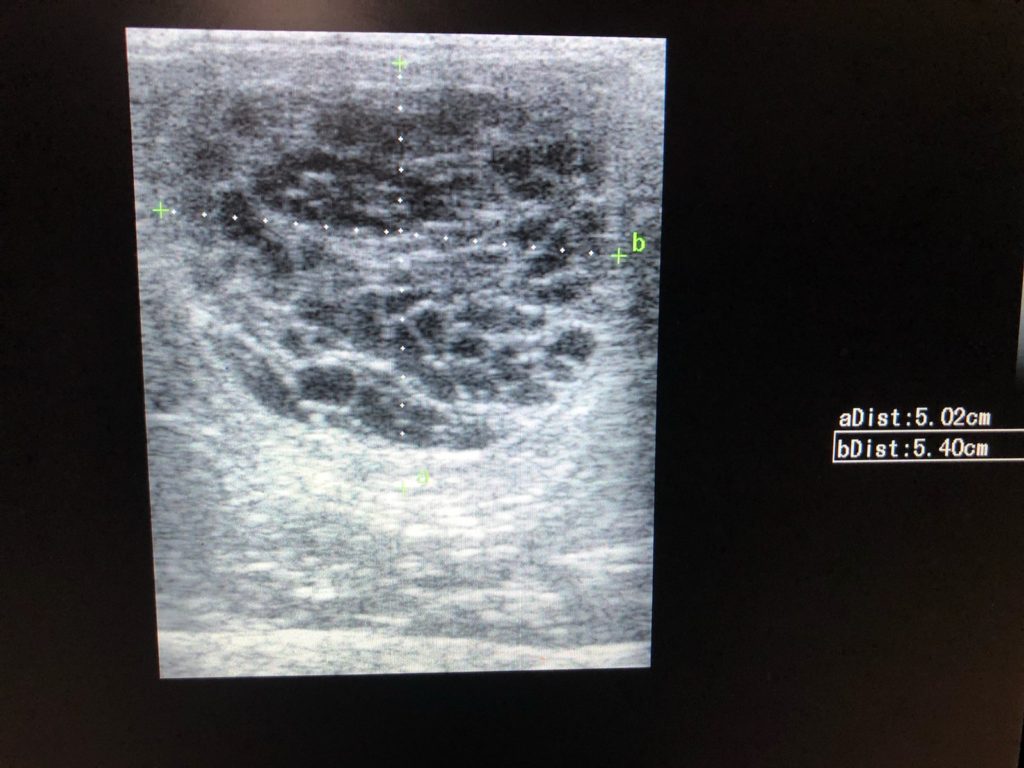
An ultrasound image from that day. Some of that honeycomb appearance is tumor, and some is a big ‘ol follicle that busted (a’la colic fourth of July). It’s hard to tell on this image exactly what is what. The size is listed on the right hand side of the image and it’s a little on the big side for an ovary, but actually really small for this type of tumor. I think we caught it really early thanks to Amber and her sharp horse sense AND having had her in training 2 years ago and knowing what was normal for *this* horse.
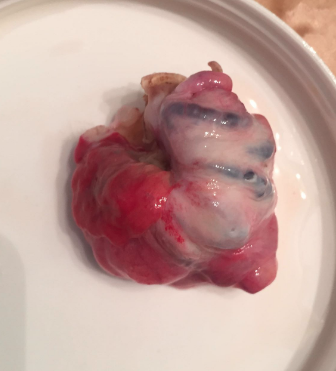
Here’s the ovary after we took it out. Why yes I DID request they save it for me, so I could store it in my vegetable crisper for a couple of weeks after completely freaking my husband out, and being banned to the bathroom and a pocket knife to perform the dissection, after having the cutting board and good sharp kitchen knife confiscated from me.

In this picture the ovary is cut in half with the sides laying open like a book on the top and bottom of the pic. The denser tissue with the hematoma (blood clot) looking thing in the middle and to the right is the result of that follicle ovulating. It’s turning into a “CL”. At the time of the ultrasound it was less filled in with tissue and was more of a bloody hole. My best guess is the tumor part of the ovary is located in the spongey honeycomb tisue to the left of that. It would have been more impressive if it had taken me longer to figure out she had a GTCT! Most of the time by the time you catch them, the ovary is at least double the size it is here.
The surgeon, me, and the vet that did the ultrasound, all agreed it walked, talked, and looked like a GTCT but I decided to do the blood test to confirm.
I was really tempted to skip it. Farley was still lame. I had just paid for 3 months of pro training. I had finally gotten a diagnosis for my eye and it was cancer and I had no idea what treatment was going to cost but I knew I was going to have to travel for it. A couple hundred dollars is a big deal, and if we were going to take that ovary out no matter what the results, what was the point?
I’m glad I did the bloodwork. I ran the ultrasound pictures by more of my colleagues after the appointment and many of them felt like the ovary looked like a giant ovulation event and didn’t feel like it was such a cut-and-dried GTCT. Getting the blood work back the next week that confirmed it as a GTCT was a huge piece of mind.
Her testosterone was mildly elevated, her AMH was sky high, and her inhibin was normal.
Bingo.
GTCT are the most common ovary tumors in mares but not the only one. The blood test also confirmed we were dealing with a run-of-the-mill GTCT and not something more sinister.
The surgery cost was at the limit of what I felt ML was *worth. If it had been more, I would have had to make some hard decisions. The sad reality is that I don’t have unlimited funds to spend on my horses. They aren’t insured, and I have multiple financial responsibilities in my life. Being a responsible horse owner doesn’t mean being able to pay for everything possible.

What was underneath when the sheet finally fell off in a couple of days. That’s SWAT smeared around the sutures to control flies.
Whenever you decide to spend money on a medical procedure for a horse you have to be ok with the reality that you may spend that money….and have a dead horse at the end of it. No matter how good the prognosis, horses like to die in strange and weird ways. If I couldn’t spend the money on the surgery, and then still be OK afterwards if she didn’t make it, I didn’t have any business spending that money. I also knew that I didn’t have any reserve for any serious complications – like colic – during or after the procedure.
We debated the risk benefit of delaying the surgery another 3 weeks until she was finished with training. In the end she finished out the month with Amber and the laparoscopic surgery was scheduled for the beginning of August.

She looked good coming from Amber’s. She’s starting to finally fill out. I wanted to cry over the muscle and condition loss I knew was going to happen because of surgery, but it will come back right???????
The surgery went well and the left ovary was removed. In “text book” cases the ovary without the tumor looks small and quiet so odds are the tumor was on the left ovary.
Of course she ripped out her sutures immediately after surgery. And don’t give me the bullshit of she must have been in pain. THE LIDOCAINE HADN’T EVEN WORN OFF YET.
Of course she was the first patient of this surgeon who had ever done that. If there was a border collie in a horse body, that would be ML. Wickedly smart and in need of an ecollar. We settled for putting a sticky sheet over the sutures. After she got sedated a second time that day and it was re-sutured.
Of course she would spike a fever mere hours before I picked her up after being cleared to go home. A sterile peritonitis is expected, but she waited a bit later than most and spent an extra day in the hospital.
Of course she refused to eat in the clinic unless handwalked outside.
I was already sweating about how I was going to keep this horse occupied during 4 weeks of stall rest, no exercise, and now I was being reminded that she didn’t like to eat when stalled either. Yay……
I won’t bore you with the toys, tricks, and games we played in those weeks except to say we both survived unscathed. Once again I was reminded that the building of an endurance partner goes beyond riding time or miles on the trail.
Fast forward 2 1/2 months post-surgery to today!
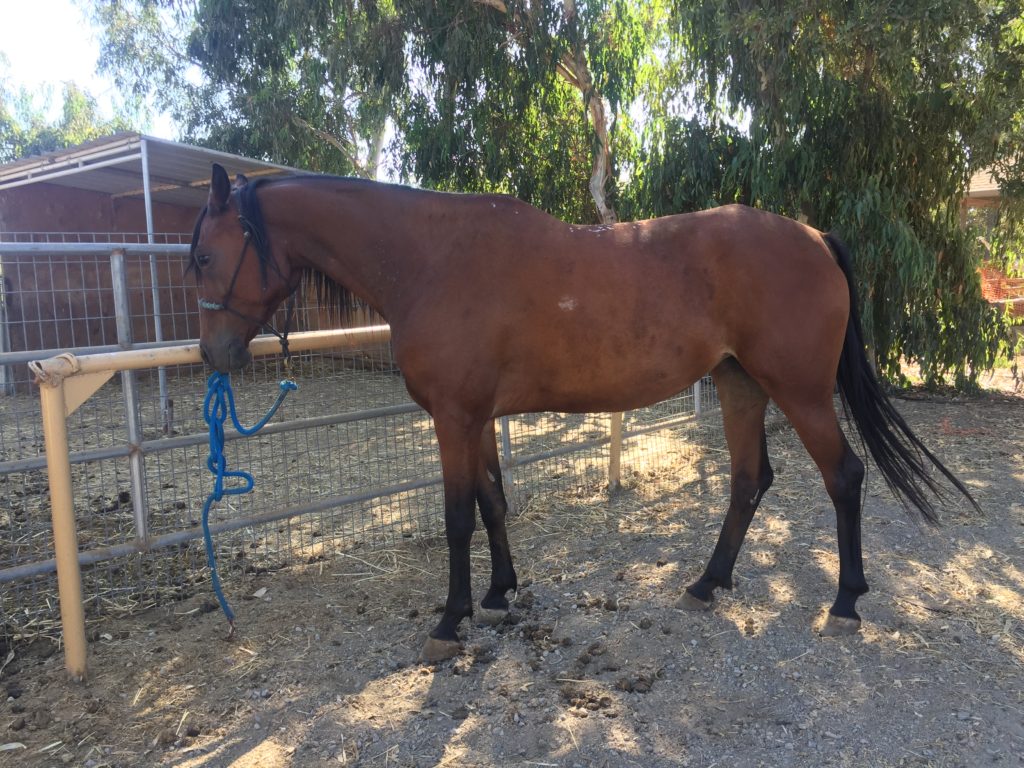
The first day she was allowed to go back to work post surgery. She was SO dang happy she was screaming at me when she saw the saddle coming over.
She’s back to work now. We’ve had multiple arena sessions. I haven’t gotten the courage to canter her since being at Amber’s, but she’s schooling in the arena at a walk and trot with lateral movements like we’ve never missed a day.
We’ve had 2 trail rides. I get a little choked up just thinking how GOOD she was on the trail. I just can’t stop thinking I don’t deserve this horse. I don’t deserve this six year old that has an old soul and who loves me with all her heart. I thought Farley was the one and only truly remarkable horse I would have the pleasure of owning and Minx was the last horse that would love me with her entire body and soul. Now I have this one that loves me like Minx, and is just as remarkable as Farley.
She takes care of herself and she takes care of me. She’s never bucked, never reared. Never done anything malicious towards a human.
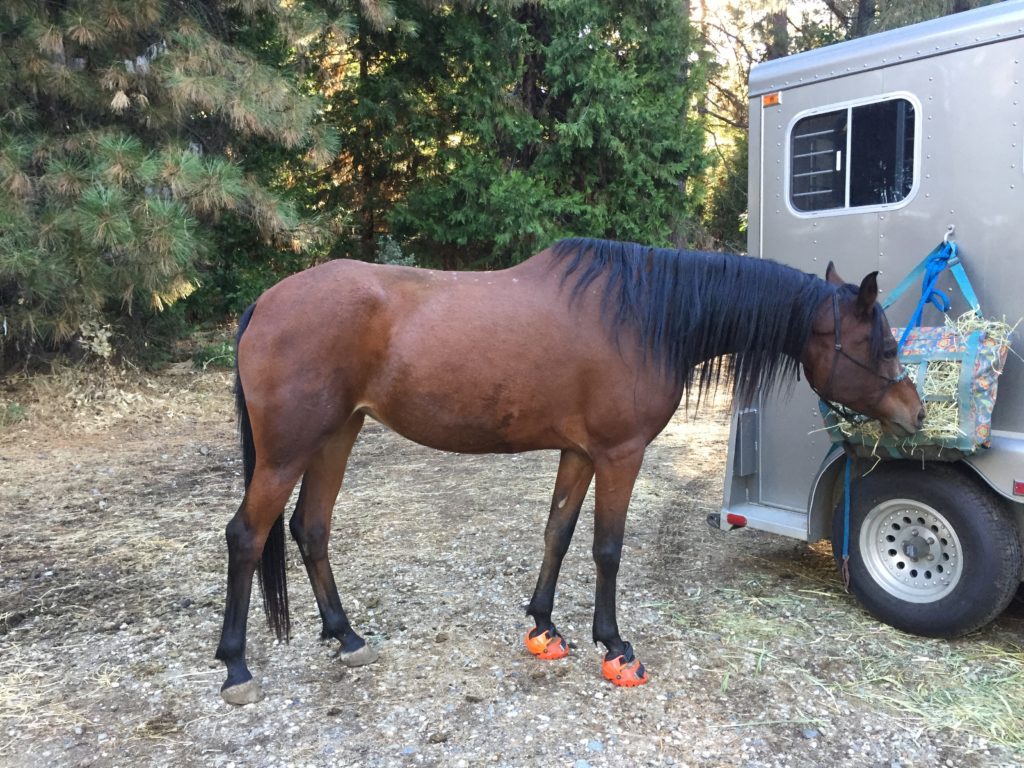
First trail ride out. Still hasn’t gained back all the muscle from being off, but I’m not looking too closely and fretting and just trying to ride.
On our first ride out, less than a quarter mile from the trail head on a windy cool morning a mountain biker passed me on a dirt road at full speed without a single acknowledgement. I screamed like a little girl as it whizzed by out of no where. She stopped and barely flicked an ear. Later when a mountain biker was coming down the trail behind us on a rocky single track at full speed, his off leash dog darting in and out and nipping at her legs, she extended the same courtesy and didn’t kill any of us.
I really need to set a higher standard for the success of our rides than “I didn’t die”.
Forget bikes, I’ll tell you what’s really scary.
Pee.
Not high speed rude mountain bikers.
Nope.
Pee rivers that come *out of nowhere* between your legs and run down the trail in front of you, where there was once no pee.
Never mind *you* are actually peeing. While standing on a slightly downhill single track.
Gotta watch out for those surprise pee rivers. o_O
I have more to say about our recent trail adventures, but I’m saving that…for my next post! 😉
In conclusion, her behavior is back to what it was a year or so ago, Farley is back to being queen of the herd, and there’s no more days of her being slightly “off”. She’s back to work with no sign she had surgery. Even the hair has grown back! Success! She should start to cycle again next year and I’m crossing my fingers her they are just blips and no longer the topic of an entire blog post!
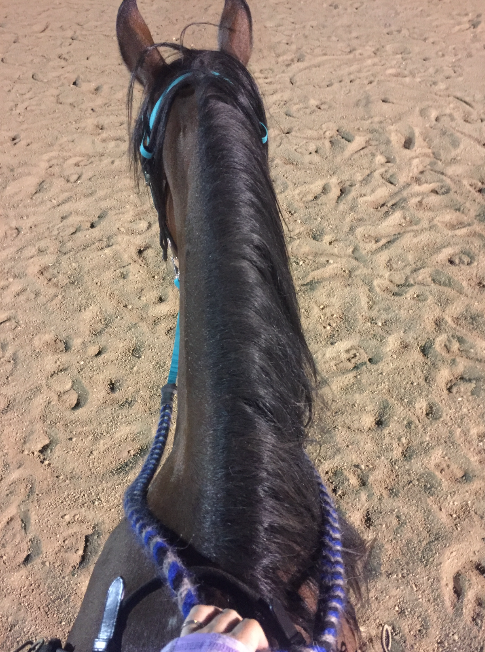
Elicia of the Wild West Comapny makes these incredible mohair reins that feel like my favorite sweater in my hands. I’ve been using mine for a couple weeks and I can’t say enough nice things about them. They are incredibly durable too. Before getting these I borrowed a pair that had seen hard use to make sure I wanted a set and they were just as lovely!


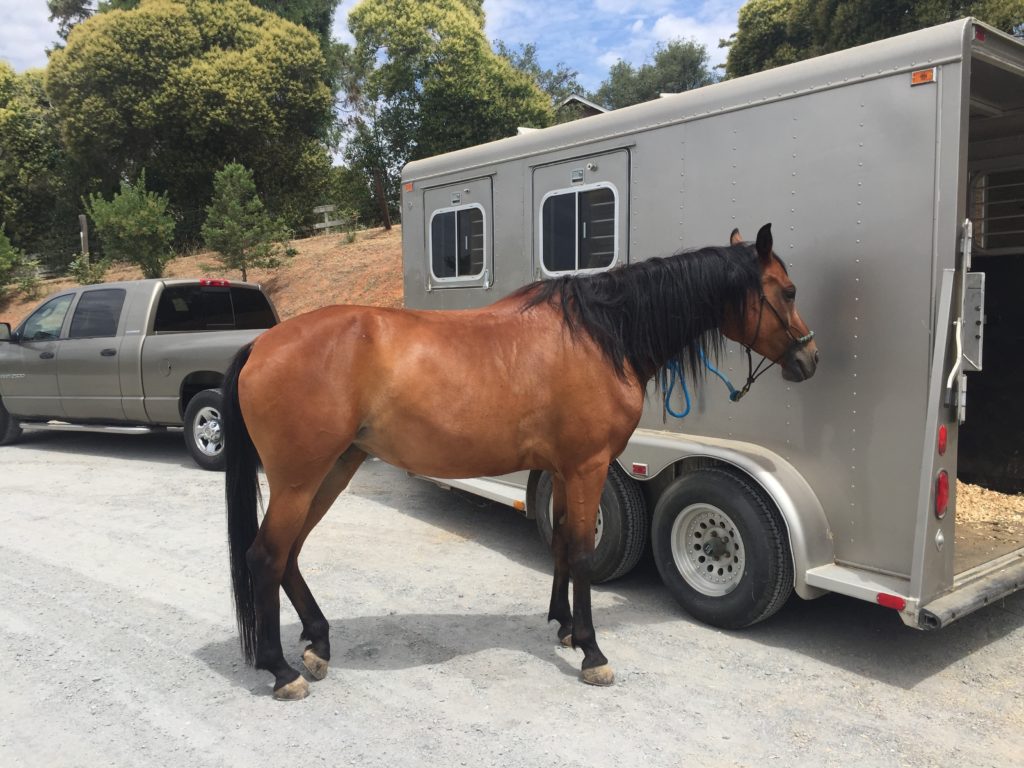
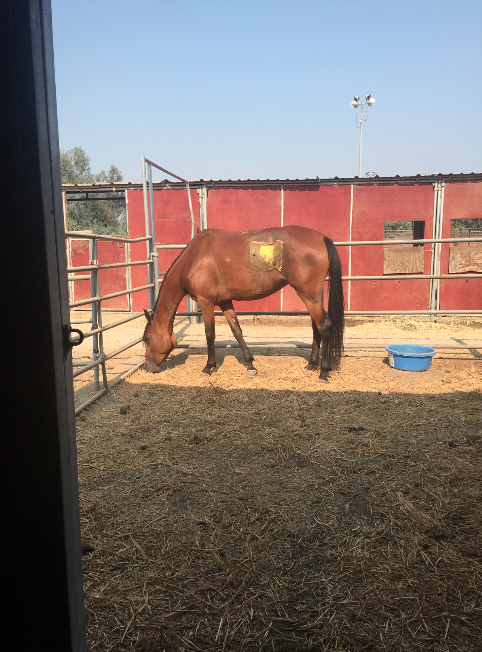
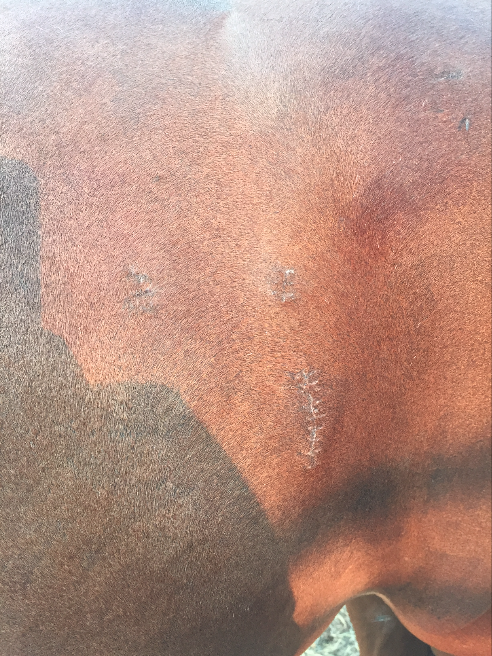
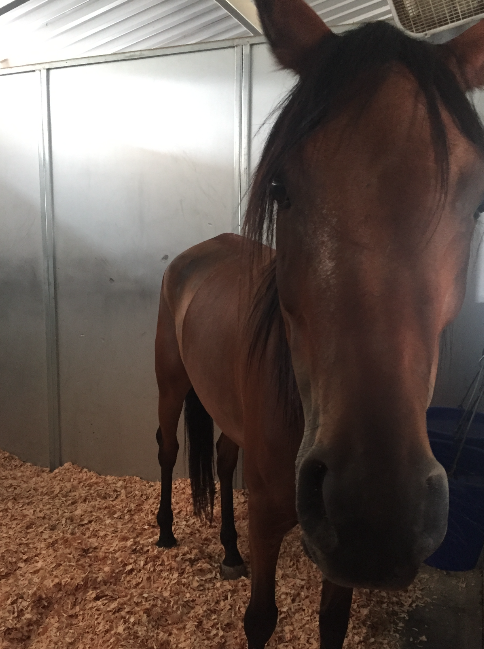
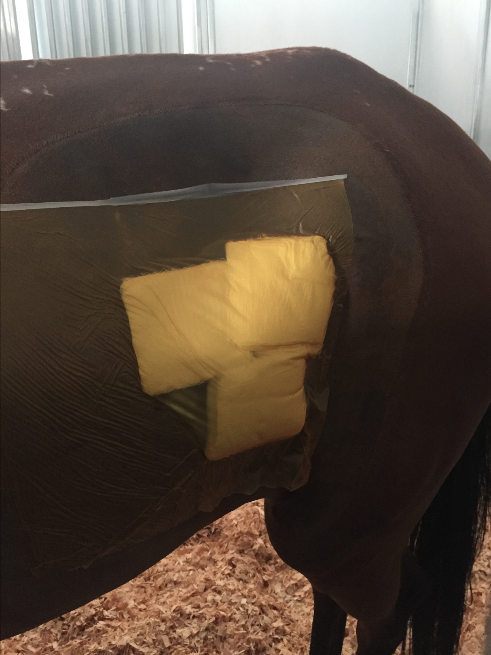
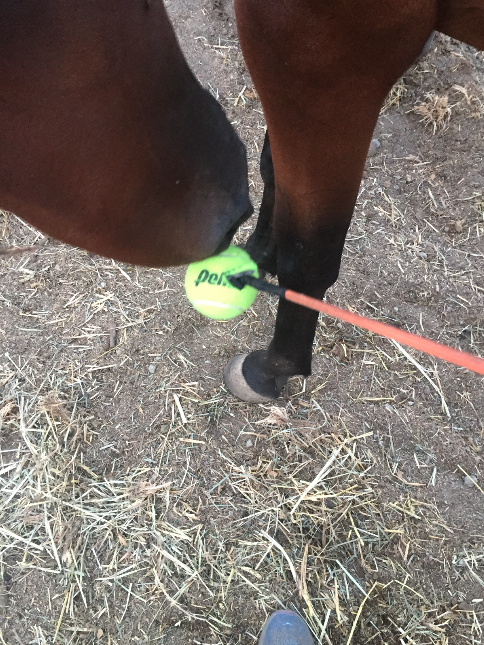
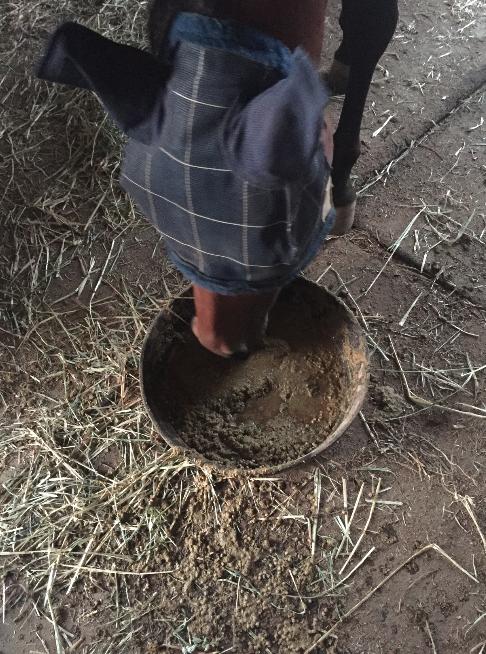
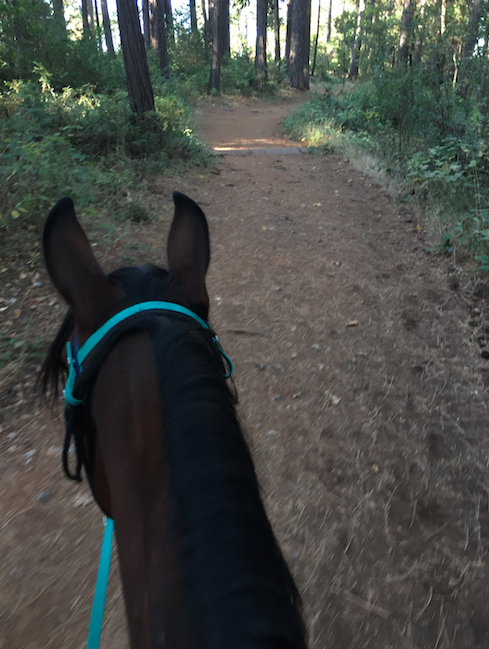



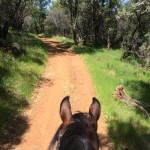
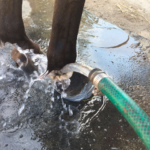






Er… Stop calling yourself “lucky to have remarkable horses”.. Having 2 remarkable horses and 2 that love/d you with all their heart is a testament to your abilities as a horsewoman. (I speak as someone who has JUST admitted this to themselves – I don’t “happen upon” good horses who learn to love me – I find them, and I make them. So do you.)
mmm…that’s an interesting thought. I feel like I just stumble on them and get lucky, but to actually take responsibility for their “goodness” is really foreign. I’ll have to roll that over in my mind!
Isn’t it amazing what they will do for us even when they are in pain?
A year after Fee’s ovariectomy, I looked at old pictures and I swear I could *see* that she was telling me about the pain. I just couldn’t see it then. With 6 years of hindsight, it’s obvious, and I wish I’d gotten her spayed much sooner.
We are so fortunate to have these mares.
It really is. Even MerryLegs who I don’t think of as stoic sure demonstrate a depth of pain tolerance that is humbling.
I’m getting a couple of messages asking me what the cost was for the surgery. Without the additional complications of the extra day in the hospital and her having to be redated and resutured it would have been just under $2k. With all that other stuff it was just over $2k. Not counting the initial ultrasound visit and blood testing. I have NOT retested the endocrine blood panel. It was my intention to do that about about the 60 day mark, but money has been spent in other places and it hasn’t been a priority. Her behavior has supported it being gone starting at 30 days post surgery. I will most likely retest that endocrine panel BEFORE spring and her going into season again so I can have confirmation that any in season behavior is just that and not a second GTCT on the other ovary. Which would be UNUSUAL….but she does belong to a vet so unusual isn’t impossible. Sigh.
Glad you spent the $$ on her. I’m with you on spending on horses but sometimes the gamble works out
But the pee river thing …???
I’m adding the picture now LOL. Forgot last night when I published it!!!!
Yeah, and it’s a gamble every single time. It just is. It’s part of the horse game. Scary AF when you are in the middle of it!
May I ask why you don’t I sure? I was just looking into that.
Love your writing, as per usual.
I think you meant why I don’t “insure”? There’s a couple of reasons. First the policies can be very tricky. Equine is better than small animal but it’s still easy to miss fine print and have something you thought was covered not be covered because of technicality. Like all pet insurance plans you have to pay out of pocket before you get reimbursed, so you are hoping that everything works out. I’ve had to write enough appeal letters on the behalf of clients to get something covered that should be covered that they are denying because of something stupid in the record from a visit 2 years ago, I’m skeptical. Second, the policies are comparatively expensive. If I total up all my medical bills for the horse, I would be better off putting that money into a savings account. It only makes sense if something catastrophic occurs. If something catastrophic occurs, then I could afford to try….but depending on the prognosis, it’s a lot of money spent still – over time more money than I probably am comfortable with taking into account my other financial goals such as getting my student loans paid off, retirement etc. If I did expensive dressage horses I would absolutely look into it since the replacement costs of that horse are much higher. The sad fact is that a really good endurance horse is replaceable for under $5,000 in this area. Sure, in a lot of ways my horses are priceless. Would I take $5,000 for either of my horses? No way!!!! But objectively that is their value and just can’t justify spending significantly more than their replacement value at any one time (including cummulative insurance costs). I think the most common thing we think of with insurance is colic and colic surgery. Depending on the type of colic, the prognosis and what’s involved in colic surgery is not something I’m personally comfortable with and I wouldn’t do with my horses regardless of whether it was covered. Medical management of a colic for 24-48 hours is something that’s financially doable without insurance. And again, I’m not sure that paying insurance premiums would make sense for the cost of that? Lameness is tricky. That’s most likely what I would be dealing with over my horse’s life time. I don’t want to delay getting something diagnosed because of the risk of having it declared pre-exisiting later. I could be really careful and absolutley know the fine print and get it to work for me maybe….but I just don’t have that energy.
In general, what I’ve decided is for my horses and what I do with them, and my average financial situation it’s smarter to put the equivalent of an insurance premium in a savings account and use that for emergencies than pay an insurance policy.
These are personal thoughts and probably won’t stay the same over time. I’m definitely not telling you what you should do, I think it’s a little different for everyone’s situation and it also changes over time as other things change. Right now the thought of adding another premium or payment on top of my student loans, life insurance, matt’s flying, the house, and our single car payment (the motorhome) just sends me into an anxiety spiral. I’m much better at preparing for one time financial disasters than adding payments right now.
I hope this helps you noodle through your own situation?
And thanks for the writing compliment. I’m getting excited about Nanowrimo. I’ve never done it, but maybe I’ll do it this year? I know that there’s a story in there somewhere and I’ve really honed my style on this blog and really think I could write something I’m proud of in book form. But isn’t that what all aspiring writers think? I’ll have six weeks of radiation therapy away from home to maybe work on something LOL.
REALLY GLAD to hear you have some positive things happening in your Life these days! You’ve weathered the horse issues, now just deal with your own problems and I am truly rooting for good outcomes there, too. Some years are more challenging than others; you’re due for a smooth 2019! Keep blogging for us.
Thanks Ginny – your unwavering support here makes me smile. I can always look forward to a positive comment from you and I appreciate it!!!! Just keep swimming and eventually I’ll get to the other side eh? I’m thinking I can tread water for a little longer.